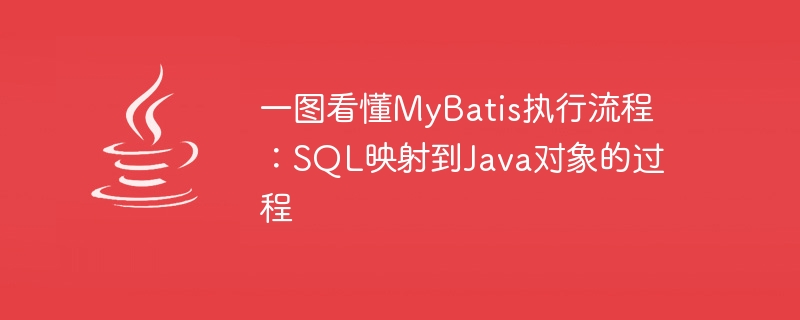

MyBatis is an excellent persistence layer framework that simplifies the process of interacting with databases in Java applications and greatly improves development efficiency. The core idea of the MyBatis framework is to map SQL statements to Java objects, and implement SQL mapping through XML configuration files or annotations, so that we can easily perform database operations.
In MyBatis, the process of mapping SQL to Java objects can be simply divided into three steps: configuring the SQL mapping file, defining Java objects and executing SQL statements. Below we demonstrate the entire process through specific code examples.
1. Configure the SQL mapping file
First, configure the database connection in the MyBatis configuration file (usually mybatis-config.xml) Information and mapping file path:
<configuration>
<environments default="development">
<environment id="development">
<transactionManager type="JDBC"/>
<dataSource type="POOLED">
<property name="driver" value="com.mysql.jdbc.Driver"/>
<property name="url" value="jdbc:mysql://localhost:3306/mybatis_demo"/>
<property name="username" value="root"/>
<property name="password" value="password"/>
</dataSource>
</environment>
</environments>
<mappers>
<mapper resource="mapper/UserMapper.xml"/>
</mappers>
</configuration>In the above configuration, we specified the database connection information and the path to the mapping file.
2. Define Java objects
Suppose we have a user object User, defined as follows:
public class User {
private Long id;
private String name;
private Integer age;
// 省略getter和setter方法
}3. Write the SQL mapping file
Configure the mapping of SQL statements to Java objects in the UserMapper.xml file:
<mapper namespace="com.example.mapper.UserMapper">
<select id="getUserById" resultType="com.example.model.User">
SELECT * FROM user WHERE id = #{id}
</select>
</mapper>The above configuration file defines a # The ##select tag represents the SQL statement for querying user information, and specifies that the result is mapped to the User object.
4. Execute SQL statements
Finally, we execute SQL statements through MyBatis’SqlSession interface and map the results to Java objects:
public class Main {
public static void main(String[] args) {
SqlSession sqlSession = sqlSessionFactory.openSession();
User user = sqlSession.selectOne("com.example.mapper.UserMapper.getUserById", 1);
System.out.println(user);
sqlSession.close();
}
}selectOne method of SqlSession, and specify that the result is mapped to the User object. Finally output the query results.
The above is the detailed content of Understand the MyBatis execution process in one picture: the process of mapping SQL to Java objects. For more information, please follow other related articles on the PHP Chinese website!
 mybatis first level cache and second level cache
mybatis first level cache and second level cache
 SQL statement to backup database
SQL statement to backup database
 What is the difference between ibatis and mybatis
What is the difference between ibatis and mybatis
 How to configure database connection in mybatis
How to configure database connection in mybatis
 What is the working principle and process of mybatis
What is the working principle and process of mybatis
 What are the differences between hibernate and mybatis
What are the differences between hibernate and mybatis
 Projector mobile phone
Projector mobile phone
 How to set ppt background picture
How to set ppt background picture




